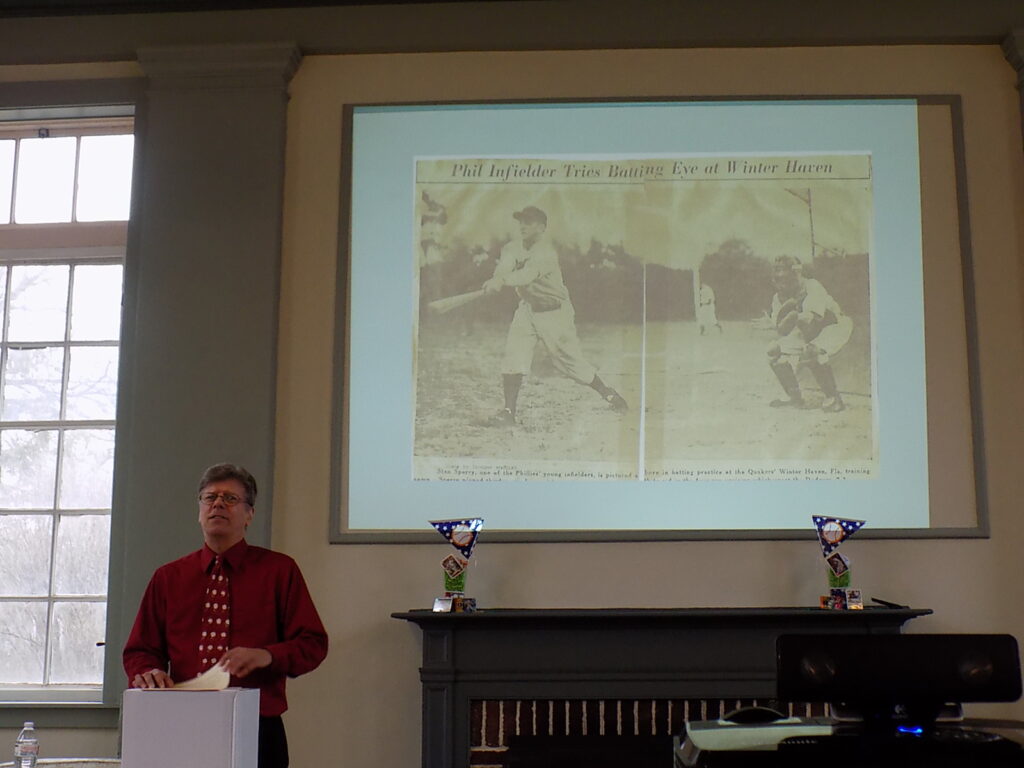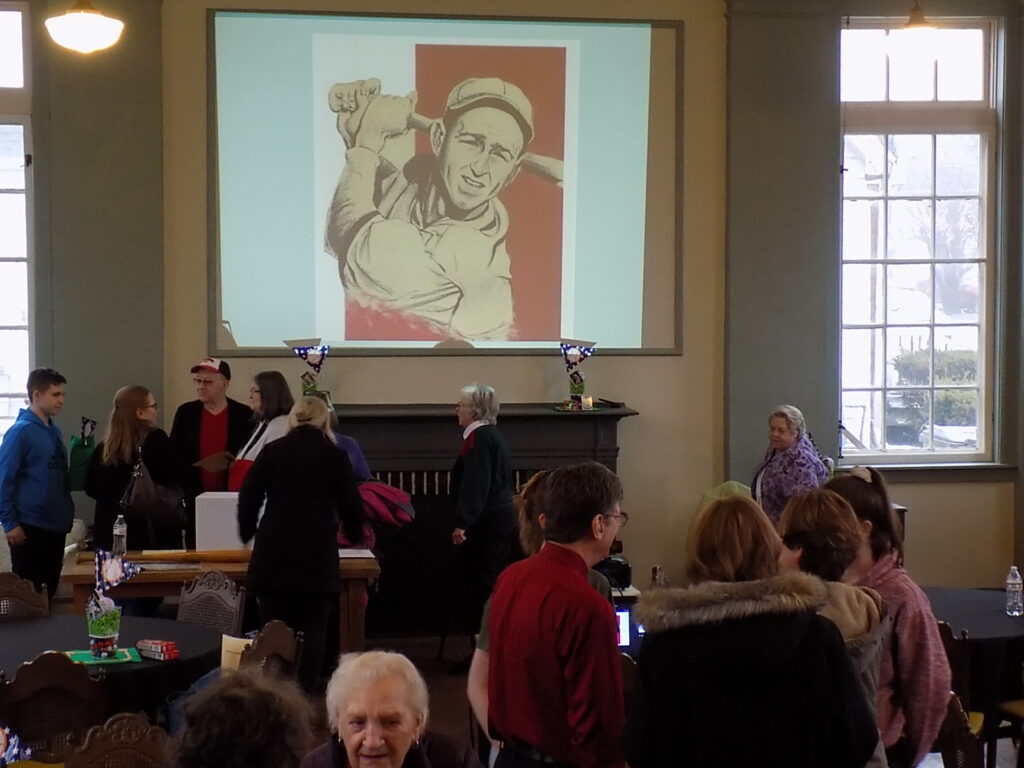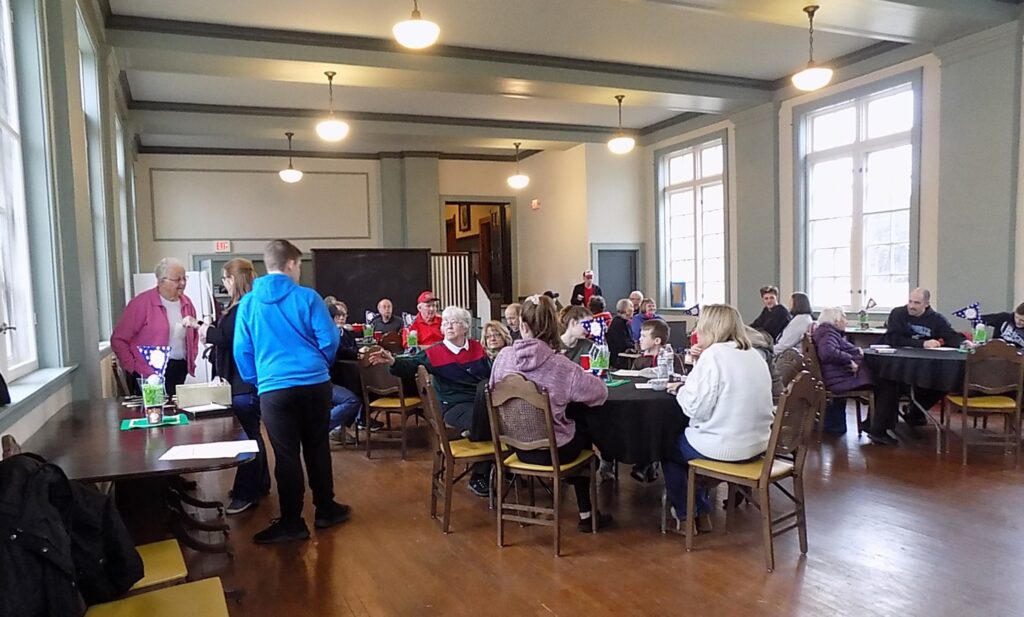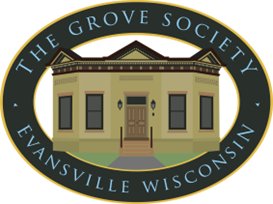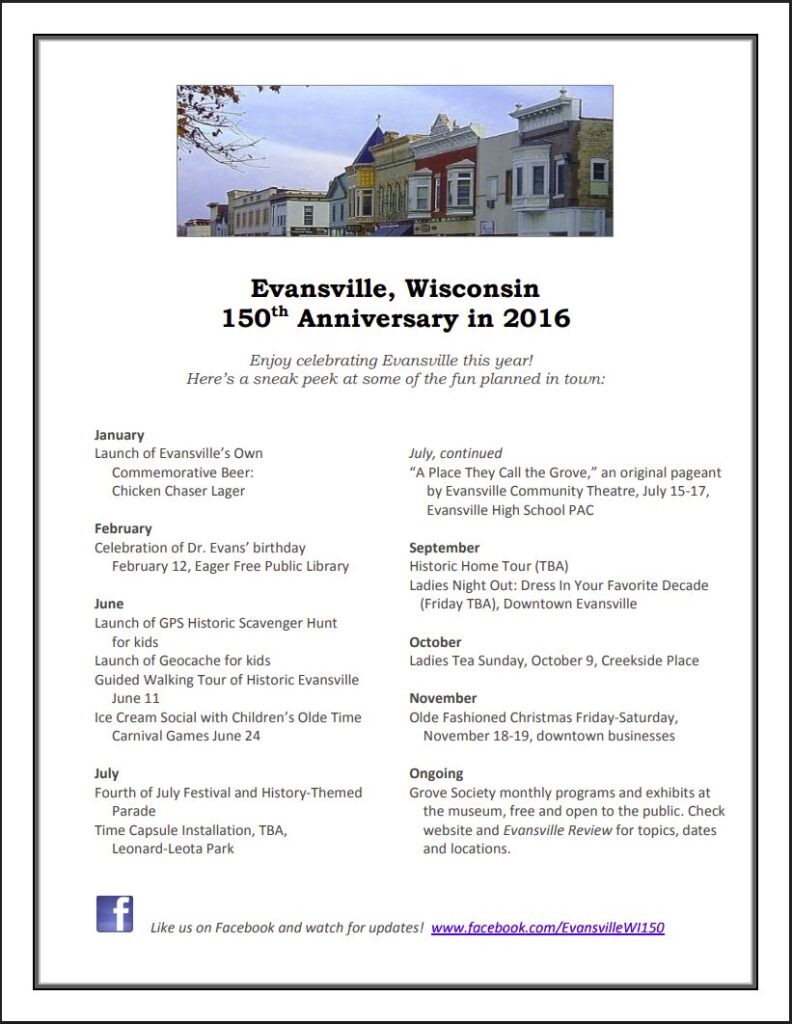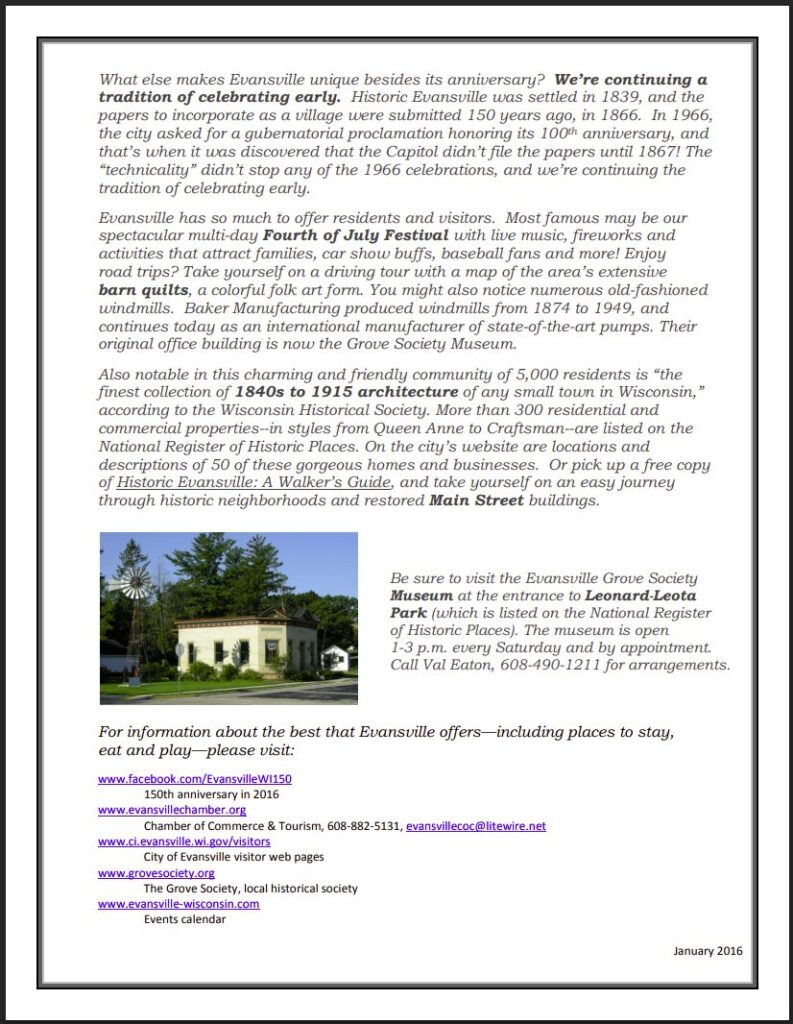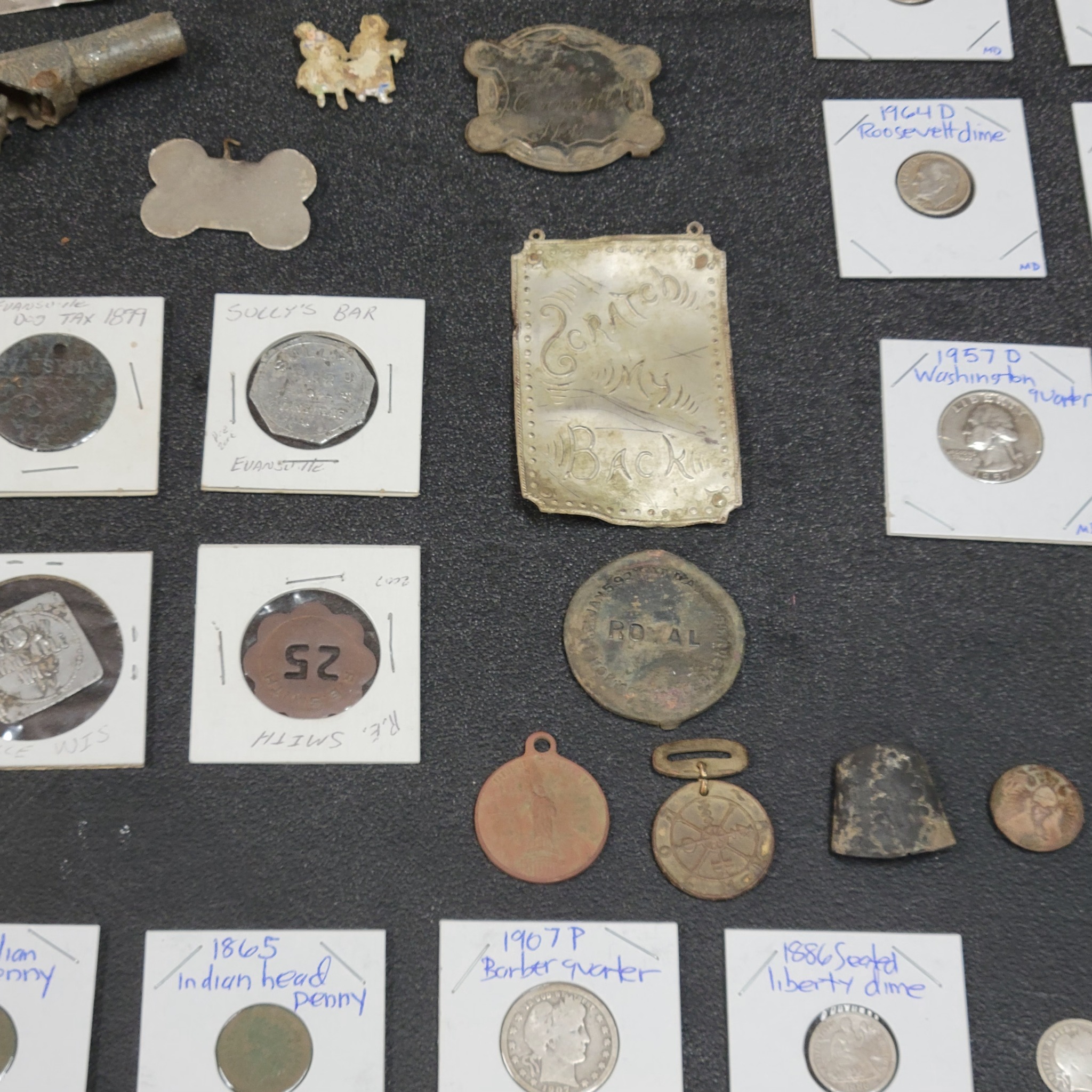2016 – America Loves to Travel
The history of Evansville’s parks, as well as the city’s ties to Highway 14’s recognition as the National Park Highway to Yellowstone Park and other Western destination points, were the major topics of discussion at Leonard-Lake Leota Park.
Grove Society president Jennifer Ehle stated that: “The Grove Society was very pleased with the results of its first ‘America Loves to Travel’ event at Leonard-Lake Leota Park. The weather was perfect without a single raindrop, which had been predicted earlier in the week.” It is estimated that approximately 100 people visited the Museum, Antes Cabin, and Barn Shelter during the one-day event.
Dan Stephans, storyteller and architect specializing in historic preservation, captivated the audience with his knowledge about the development of the roads. A quick summary follows: People started buying cars in the early 1900s and wanted to travel. Tourist camps, like the one at Lake Leota, became popular shortly thereafter and were built along the highways. Car clubs, including the AAA, were formed, which developed road maps and worked to improve the roads. Private citizens and social organizations supported Leonard-Lake Leota Park for the next 95 years.
The following people from Evansville and the surrounding area brought their antique cars to the August 28th event, which were displayed near the Horse Barn. Carl Pyper of Evansville arrived first with his 1932 bright red Ford Truck. Other Evansville owners were Dorothy Helgeson with her 1930 Ford Model A Roadster and Alan Titus of Evansville with his 1938 Ford Fordor. Car show organizer Lee Stock of Belleville brought his 1921 Ford Model A and 1928 Ford Model A Tudor. Gary Splitter of Brooklyn attended with his 1931 Model A Ford Truck. Stoughton was represented by Jeff and Brenda Zarth with his newly-purchased 1951 Ford Tudor and Howard Hanson with his 1928 Ford Roadster. Jeff and Sue Bergey enjoyed a Sunday afternoon drive From Oregon to Evansville in their 1930 Ford Model A Roadster. And, Chris Beebe traveled the road from Cooksville to Evansville in his 1939 MG TB.
Troop 514 and Friends of the Eager Free Public Library sold food and refreshments at the Park Store and Horse Barn. The Museum and Antes Cabin featured photographs, printed news articles, and artifacts from the 1920s to early 1950s about Evansville’s tourist camp. The exhibit also contains information about the federally funded projects, which built the buildings, structures and the viaduct in Leonard-Lake Leota Park,
The exhibits will remain on display at the Museum and Antes Cabin through the month of September, every Saturday 1:00 pm – 3:00 p.m. and by appointment with Jennifer Ehle 608-302-1722. In October, the Museum will begin reduced hours.
The Grove Society would like to thank the Evansville Ford and Symdon Chevrolet for their financial support. Also, members of the planning committee who attended meetings for the past year to organize the event: Dan Stephans for his presentation, Lee Stock for organizing the car show, Troop 514 and Friends of the EFPL for refreshments, and representatives of the committee to complete restoration work of the Antes Cabin. Ray Anderson of the Evansville Parks was very responsive to our requests. Creekside Place provided a microphone and speakers, Larson Acres supplied chairs and a table, and Steve Ehle photographed the event and provided editorial assistance.
Finally, a special thank-you to the car owners who displayed their cars and the many volunteers who served as docents and helpers at the Museum, Antes Cabin and Barn Shelter.
There is potential for a second America Loves to Travel event next year, and potentially several others, but additional volunteers are needed for this to happen. The vintage vehicle car show could continue with the addition of other aspects of Leonard-Lake Leota Park. Please contact Jennifer Ehle, jenniferehle1@gmail.com, phone 608-302-1722, if you, or your organization, would like to help plan an event in 2017. We are analyzing the event and thinking of new ideas.
